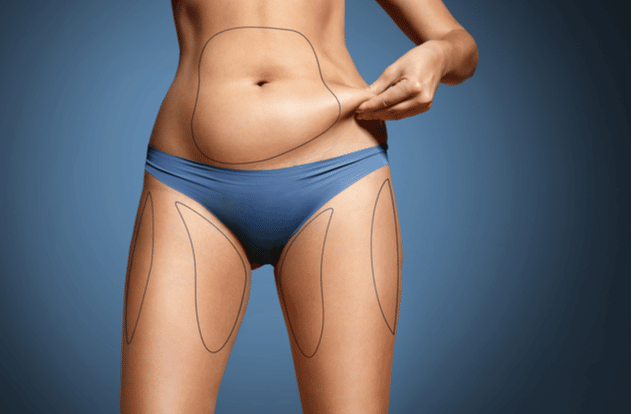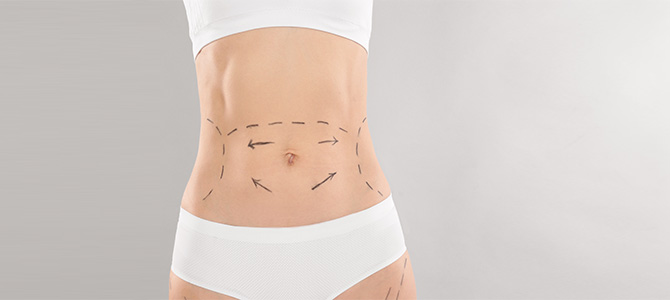A tummy tuck, also known as abdominoplasty, is a transformative cosmetic procedure that can help you achieve a smoother, flatter abdomen. Whether you’re looking to tighten loose skin after weight loss, pregnancy, or aging, a tummy tuck offers a solution that enhances both your appearance and confidence. If you're considering this procedure, it’s important to understand the details of the surgery, what to expect during recovery, and how to maintain your results. This comprehensive guide will provide you with all the essential information you need to embark on your Tummy Tuck Dubai journey with clarity and confidence.
Understanding Tummy Tuck Surgery: What It Involves
Tummy tuck surgery is designed to remove excess skin and fat from the abdominal area and to tighten the underlying muscles. This procedure is ideal for individuals who have experienced significant weight loss or pregnancy, which can lead to stretched skin and separated muscles that don’t respond well to diet and exercise. During the surgery, the surgeon makes an incision along the lower abdomen to remove the unwanted tissue. In many cases, the abdominal muscles are also tightened to provide a more sculpted and firm appearance.
There are different types of tummy tuck procedures, each tailored to meet specific needs:
- Full Tummy Tuck: This is the most common approach, involving a long incision that extends from one hip to the other. It’s suitable for individuals with substantial amounts of excess skin and fat.
- Mini Tummy Tuck: A less invasive option for those who only have excess skin and fat below the belly button. The incision is shorter, and the procedure is typically quicker with a shorter recovery period.
- Extended Tummy Tuck: For individuals who have excess skin around the abdomen and sides, an extended tummy tuck includes additional incisions to address the flanks, providing a more comprehensive body contouring solution.
The decision on which type of tummy tuck is best suited for you depends on the extent of your abdominal concerns, and your surgeon will guide you through this decision-making process during your consultation.
The Tummy Tuck Procedure: What to Expect
Before the surgery begins, you’ll receive anesthesia to ensure that you are comfortable and pain-free throughout the procedure. The length of the surgery can vary depending on the complexity of the case, but it typically lasts several hours.
During the procedure:
- Incision and Skin Removal: The surgeon makes a strategic incision, often low along the bikini line, to remove excess skin and fat. In some cases, additional liposuction may be performed to refine the contours further.
- Muscle Repair: If your abdominal muscles have been stretched or separated, the surgeon will stitch them back together, which tightens the abdominal wall and flattens the stomach.
- Redraping and Closing the Skin: After removing excess skin and repairing the muscles, the remaining skin is pulled tight and stitched back into place. The incisions are closed with sutures, and dressings are applied to the surgical site.
While the procedure is effective for many individuals, it’s essential to have realistic expectations. Tummy tuck surgery provides dramatic results, but it does not prevent future weight gain or the effects of aging. For long-lasting results, maintaining a healthy lifestyle is key.

Recovery After Tummy Tuck Surgery: Healing and Healing Phases
Recovery after a tummy tuck is a gradual process, and understanding what to expect can help you navigate it with ease. Immediately after surgery, you may feel groggy and experience discomfort, but this can be managed with prescribed pain medications. Here’s a breakdown of the typical recovery timeline and what you should expect:
The First Week: Rest and Careful Movement
In the first week after surgery, your primary focus should be rest. Most patients experience swelling, bruising, and some discomfort, but these symptoms gradually subside. You’ll be given compression garments to wear, which help control swelling and support your abdomen as it heals.
During this phase, it’s important to avoid any strenuous movement. You’ll be instructed to walk around gently to promote circulation and prevent blood clots, but you should refrain from bending, lifting, or doing anything that could strain your abdomen.
Week Two to Week Four: Gradual Return to Daily Activities
As the swelling begins to subside, many patients start feeling better and are able to resume light daily activities. However, it's still crucial to avoid any heavy lifting or intense physical activity during this period. The muscles in your abdomen will still be healing, so it’s important not to rush the recovery process.
Week Four to Week Six: More Freedom, But Caution is Still Needed
By the four- to six-week mark, you may be able to return to work if your job doesn’t involve physical labor. Swelling should be significantly reduced, and you may notice the first glimpses of your new body shape. However, more intense exercise, such as heavy lifting or high-impact activities, should still be avoided.
Long-Term Healing: Enjoying Your Results
Complete recovery from tummy tuck surgery typically takes several months. It’s important to follow your surgeon’s post-operative care instructions to ensure that your incision heals properly and that you achieve optimal results. The final results of your surgery will continue to improve over time as any residual swelling diminishes, and your abdominal contour becomes more defined.
Post-Surgery Care: Ensuring a Smooth Recovery
To ensure the best outcome from your tummy tuck surgery, proper post-surgery care is critical. Here are a few important aspects of post-operative care to keep in mind:
- Follow-Up Appointments: After your surgery, your surgeon will schedule follow-up appointments to monitor your progress and check for any complications. These visits are essential to ensuring that your recovery is on track.
- Compression Garments: Wearing compression garments as directed by your surgeon is key to controlling swelling and supporting the healing process.
- Diet and Hydration: Eating a balanced diet and staying hydrated during recovery can support your body’s healing process and reduce complications.
- Exercise and Activity: Once your surgeon gives you the green light, engaging in light physical activity and exercises can help tone your body and support your overall health.
Maintaining Your Tummy Tuck Results: The Importance of a Healthy Lifestyle
While a Tummy Tuck in Dubai provides permanent results in terms of skin removal and muscle tightening, maintaining your new look depends largely on your lifestyle choices. Here’s how you can maintain your tummy tuck results:
- Diet: Maintaining a healthy, balanced diet that’s rich in nutrients will help keep your weight stable and prevent your abdominal area from regaining excess fat.
- Exercise: Incorporating regular physical activity into your routine can help you maintain muscle tone and overall body fitness. Focus on exercises that strengthen the core, which will enhance the firmness of your abdomen.
- Avoiding Significant Weight Fluctuations: Dramatic weight gain or loss can impact the results of your tummy tuck, so it’s essential to stay within a healthy weight range to preserve the appearance of your abdomen.
Conclusion: Achieving a Refined Silhouette with Confidence
A tummy tuck can offer life-changing results for individuals who struggle with excess skin or abdominal muscle weakness that doesn’t respond to diet and exercise. By understanding the procedure, recovery process, and maintenance strategies, you can feel confident in your decision to undergo surgery and embrace your transformed body. Whether you’re looking to regain a firmer, more youthful abdomen or simply enhance your body contour, tummy tuck surgery can help you achieve your goals and boost your self-esteem. Always consult with a trusted professional to ensure that you’re fully prepared for the surgery and recovery process.





Comments